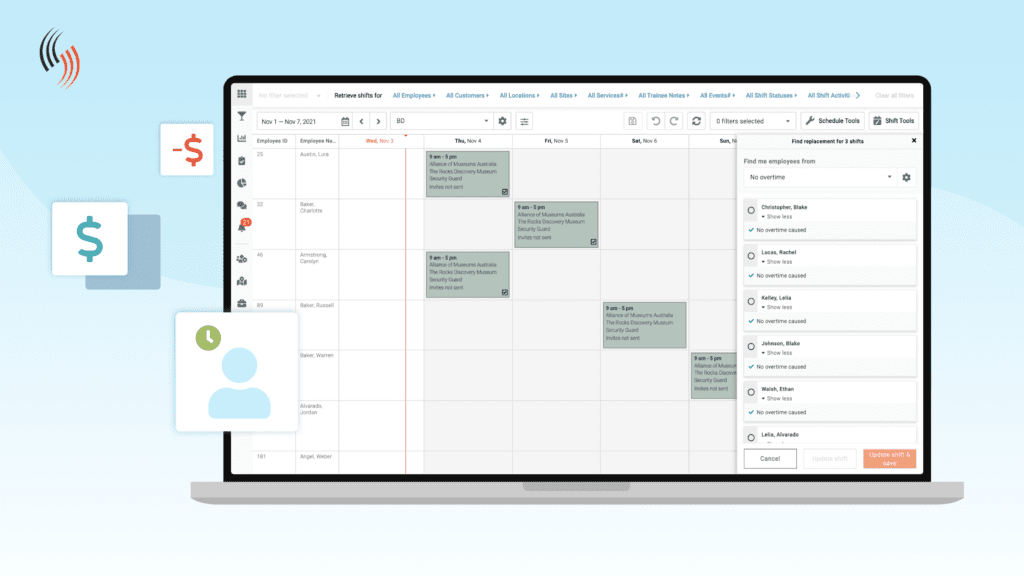Why do you need an absenteeism policy?
Every company & every workplace is vulnerable to Absenteeism. Therefore, it is imperative for employers to address this issue within their organization and establish a policy that reduces absenteeism. This can be difficult to do without affecting the employee-centric culture fostered by the modern world. Before exploring the strategies that Celayix employs to curb this problem, we recommend taking a look at our earlier blog post “The True Causes & Costs of Absenteeism in the Workplace.”
Now that you have a better understanding of absenteeism, the next step for any workplace is to create a well-designed absenteeism policy that factors into account the possibility of unpreventable events. Celayix’s solution strives to develop and achieve a set of guidelines for employers that could benefit from reducing absenteeism.
How to create an absenteeism policy?

Before hiring any employee, employers must clarify expectations for attendance, punctuality, and discipline to help develop a sense of work ethic within the workplace. Similarly, an employee should be required to communicate with the employers or the Human Resource department for any attendance-related issue. This is common in employees with children who may need early finishes on certain days due to childcare.
Identifying these responsibilities for employees and employers helps establish a comprehensive system. Any issue of absenteeism is recognized, communicated, and solved without requiring any strict disciplinary measure.
Subsequently, when developing an absenteeism policy, employers should set a list of guidelines that can be explained during training. Some of the guidelines that Celayix highly recommends are:
PTO Policy
The objective of a PTO (Paid Time Off) policy is to give employees a set number of days in a year where they could take a leave from work and still be compensated for those days. This policy might seem counterintuitive with regards to improving employee absenteeism. However, this policy helps in giving employees greater motivation to use their PTO days efficiently. It also helps employers to track and determine whether the employee has gone over the limit on their PTO. It’s very likely that employees use a PTO policy as an encouragement towards reducing their absence from work in order to keep up with their expected earnings. Subsequently, they have a lesser chance of having prolonged absences from the workplace. Although the Department of Labor has no requirements for PTO, a strong policy can also be used to attract talent.
Attendance and tardiness report
One of the most important practices required for a workplace is to have a functional and easily adaptive clocking-in system. The system should collect entry and exit data from the workplace, timings of any lunch or additional breaks, etc. This is necessary to keep an attendance report that has sufficient data to highlight absenteeism and subsequently address any issue that arises.
Sick leave guidelines

Sick leave is a form of paid leave. It is intended to protect an employee’s income when the employee is unable to perform their duties due to illness/injury. A certain amount of sick leave days are expected and allowed. However, few limitations under sick leave guidelines establish a difference between sick leaves and personal leaves. A list of guidelines required to excuse leave from their work duties and still get paid is necessary to reduce shirking. A major responsibility for any employer is to list a set of requirements that is necessary to be accepted for sick day leave. This would drive personal leaves down as well as establish a set of rules that employees must follow.
How to enforce your absenteeism policy?
So, you have an absenteeism policy, great! The next question to answer is how to enforce that absenteeism policy amongst your employees.
Hiring new employees
Echoing back to new employees, it is crucial to include your absenteeism policy with your employee onboarding documentation. This sets the expectations from the start and means that new hires are less likely to engage in absenteeism. You can also hold company-wide seminars or meetings explaining the guidelines under the absenteeism policy followed by some Q&A sessions. This would help to clarify any remaining doubts. Managers should also educate their employees regarding the consequences of not following the absenteeism policy on a regular basis.
Formulate a tracking system
In order to effectively manage absenteeism, it is critical to accurately capture and track employee time and attendance data. There is a fine line between irregular absence from the workplace and employee absenteeism. Employees are allotted some days for paid leave due to family responsibilities or for other valid reasons. These are often known and noted beforehand. On the other hand, personal and professional problems that usually take a toll on a person’s mental and physical health are difficult to track. Consequently, these result in more habitual non-presence in the workplace.
Keeping track of these events can benefit in reducing disputes between employers and employees. It also helps with investigating and understanding the reasons behind absenteeism. The tracking system needs to differentiate between official leave and unofficial leave. You should be able to calculate % of days that an employee was absent within a period. While some % of absenteeism is expected and accepted, it is necessary to track this data to identify periods of underproductivity within the workplace.
Encourage punctuality and participation

The simplest and the most effective solution to absenteeism is encouraging your employees to participate as much as possible in the workplace. This also goes for creating and enforcing your absenteeism policy. If possible, include your employees in the discussion and development around your policy, and allow them to have some input. You’d be surprised how effective this is when it comes to your employees adhering to the policy they helped create.
Give additional incentives during times of distress
If you have read our previous blog, you would know that it can have a long-term impact on the employee’s productivity and hence the business if no suitable measures are taken. Moreover, while identifying the root problem for absenteeism is equally necessary, suitable measures such as Wellness Programs, flexible schedules, remote working, and boosting morale help in times of distress and help employees regain their productive instinct. These are all factors that should be detailed in your absenteeism policy in detail so that employees know that you are there for them.
Initiate Two-Way Feedback Sessions
Employers and employees need to have an open discussion over things that might be problematic for the workplace. For example, an employer needs to set disciplinary procedures and consequences for the employees if Absenteeism is continued for a more extended period. A robust absence management strategy would be to spend more time working with the employee for feedback than making decisions based on data-driven evaluations. Similarly, employees should be given a platform to share their input on the workplace’s management and overall atmosphere.
How can Celayix help?

Creating and enforcing an Employee Absenteeism Policy can be very tedious and requires the policy to be meticulous in order for the policy to be effective. Having your policy in place is one thing, but being able to effectively capture, manage and utilize the data you need can be difficult. Celayix monitors employee absenteeism and collects time and attendance data with ease. Not only that but with our Find Replacement feature, replacing absent employees has never been easier. Other features such as self-scheduling and shift bidding can also help you introduce flexible scheduling into the workplace in an effort to reduce absenteeism.




